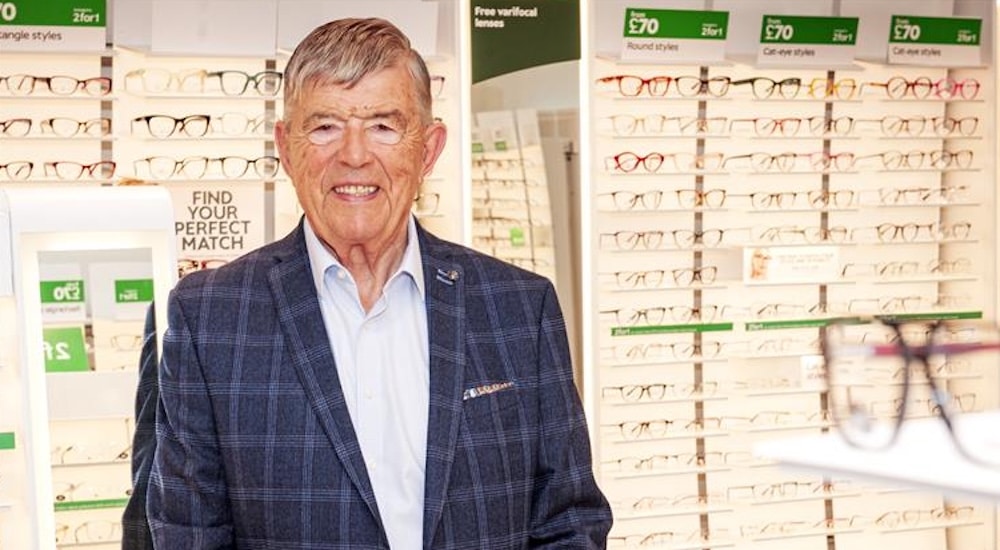10 SOLUTIONS FOR 10 CURRENT HEARING PRACTICE PROBLEMS
Hearing Practices
Today’s audiologists have challenges coming at them from all angles. Whether it’s Covid, repair turnaround, cash flow, modern marketing complexities, or doubts about pricing, the solutions are there. Audio Infos asked Starkey’s UK MD, Tim Clark, to share his thoughts on 10 current problems faced in hearing practices. Start counting...


© DrAfter123 – iStock 1: Managing pent-up demand
Many independent hearing healthcare practitioners have seen significant growth in demand for their services as the country has steadily moved out of Covid restrictions. People who may have delayed seeking help for their hearing loss during the height of Covid are now gaining confidence in coming forward. This is placing a growing burden on the resources of independent hearing aid professionals.
Expanding the practice through recruitment can help to provide additional bandwidth but can be challenging, particularly for owner-managed businesses. Many hearing professionals can be reluctant to take on external candidates fearing loss of control of their business values and service standards. Equally, errors in recruiting and onboarding the wrong candidate can be damaging and costly to a small independent business. Many business owners can shy away from recruiting or seek to expand bandwidth by onboarding friends and family to the business as a preference to external candidates.
Solution:
Manufacturers can offer support, advice, and some even offer services to support the recruitment process. Specialist recruitment consultants can also be very helpful in understanding the needs of your business and the unique approach of independent business. They will take close care to connect hearing professionals with suitable candidates that match their ethos and practice culture to enhance and grow their business.
2. Over-indexing on wax removal
The decline of wax removal services offered via GP surgeries has opened up significant opportunities for independent hearing professionals in building a pipeline of wax patient referrals through to their business. This has been advantageous as both a revenue generator and lead generating mechanism. The challenge, however, is for hearing professionals to take care not to overfill the diary with wax removal appointments at the expense of more profitable hearing test appointments and enquiries.
Solutions:
Allocating pre-determined time for wax patients is essential to ensure that diary time is managed effectively, and hearing tests and sales are not sacrificed for wax removal appointment. Ensuring marketing messaging is impactful, effective, and with a clear focus on hearing care and hearing assessments, will also assist in generating a balanced enquiry pipeline into the practice.
3. Matching staffing with service
Staff performing duties that do not match their experience, qualifications, or skills risks wasting resources and demoralising employees by under-utilising their capabilities and not maximising the contribution they can make to the business.
Solutions:
- Aligning the skill sets of your staff with the correct service provision is an important tactical approach.
- Exploring apprenticeships and training courses that upskill staff.
- Investing in staff training such as Hearing Care Assistants courses for wax removal and screening, impression taking, receptionist courses, and marketing and business knowledge.
These can all be invaluable in maximising their contribution to the business and freeing up qualified hearing care professionals to focus on the stronger revenue-generating activities around hearing aid fittings, dispensing, and business management.

4. Safety First
Covid has not gone away and remains a concern to people. As we take hopeful steps to a more normal world, fears around Covid infection remain a risk to patient confidence and could impact new footfall coming into the practice as well as returning patients.
Solution:
Maintain robust Covid procedures.
Ensuring patients feel safe and secure in a Covid climate is fundamental in building their trust to confidently come into the practice. Delivering higher standards of hygiene and cleanliness will bring confidence to all who engage with your practice and reflect positively on your business.
5. Pressure on prices
In this digital era, retail pricing can often feel under pressure from a multitude of online propositions with differing business models that promote unrealistic price expectations to consumers.
The common concern is that the prices published do not provide clarity on the importance of a service proposition that sits behind the costs of the hearing aid; the most vital component to ensure successful outcomes for the client. These competitive pricings can create an unhelpful and unrealistic price anchor in the mind of the consumer.
Solution:
Focus on your unique and compelling service proposition. Whilst an element of the market is commodity driven, the trend for today’s consumers is value over price. Since the Covid pandemic, this new care culture is coming to the forefront on all retail fronts, not only in hearing provision. Trust in your service delivery to differentiate your offering in the marketplace. As an independent hearing professional, you control your time and the resources you dedicate to each patient to ensure they receive a service that delights and surpasses their expectation. This service underlines the clear value of your pricing structure and how it exceeds online price points.
6. Consistent hearing assessment pipeline
Generating a consistent flow of new hearing tests into the practice and the consequent cashflow is a vital component of a healthy business. Ensuring a steady flow can be challenging. Many factors can impact this pipeline, such as seasonal trends, extreme weather conditions, and even political uncertainty.
Solution:
Proactive implementation of a marketing plan can support periods of low enquiries. Using your experience of past business levels to forecast future revenues will identify the gaps. With this insight, implement activity to stimulate demand during these quieter spells to generate consistency of enquiries and a more balanced ongoing cash flow through the business.
7. Cash flow during quiet spells
The pandemic has taught us many lessons, including the importance of having sufficient working capital in the business. Business interruption can and does happen unexpectedly and can cause challenges and uncertainty to an independent practice.
Solution:
Good discipline around cash management and forecasting is important for a business to ensure it can sustain itself during lean and uncertain times. A minimum of three months working capital (excluding purchases) is a recommended benchmark to support a small business and enable continuation of operations during difficult and unpredictable times. Having a financial buffer to protect the business also provides peace of mind for business owners during quiet spells such as Christmas and summer holidays.
8. Keep a close eye on credit return rates
High credit return rates can be both demoralising for an independent hearing care professional and be a wasteful use of chair time with the HCP.
Solution:
- Effectively triaging the patient can help manage patient expectations carefully and openly .
- Ensure time spent with the patient is aligned with the expectations of a successful outcome and resulting benefits.
- Implementing a consistent and robust post fitting process will also help to maximise a strong patient outcome.
9. The importance of service and repairs
Hearing aid wearers face significant life challenges in being without their hearing aids for any length of time while they are submitted for repair. This can lead to discontent and a tarnished reputation if not managed effectively
Solution:
- Work closely with your manufacturer to develop an open dialogue and to stay informed on timescales and issues with repairs .
- Proactively communicate these updates to your clients to give them openness and transparency and manage expectations on delivery and turnaround.
10. The rise and rise of digital marketing
The adoption of technology by consumers has accelerated significantly during the pandemic. People have been driven online in order to work, socialise, and live during lockdowns. Consequently, more of your customers and future customers will be online than ever before, and they will be even more digital savvy. The way hearing professionals marketed to customers pre-Covid may no longer bring the same results and effectiveness after this substantial digital shift.
Solutions:
Be present in your digital community and create a strong digital footprint. Signposting your practice online and creating digital visibility of your hearing care services requires an awareness of search engine optimisation, social media tools, and digital campaign management.
The digital marketing landscape, with its endless array of options, can appear overwhelming but the basic principles of marketing still apply.
Understand where your customers are, establish the channels to reach them and build communications to create an impactful conversation. Manufacturers have much experience in this field and are keen to help. Reach out to your provider for help, advice and practical support.
Source: Audio Infos UK #145 – November/December 2021











